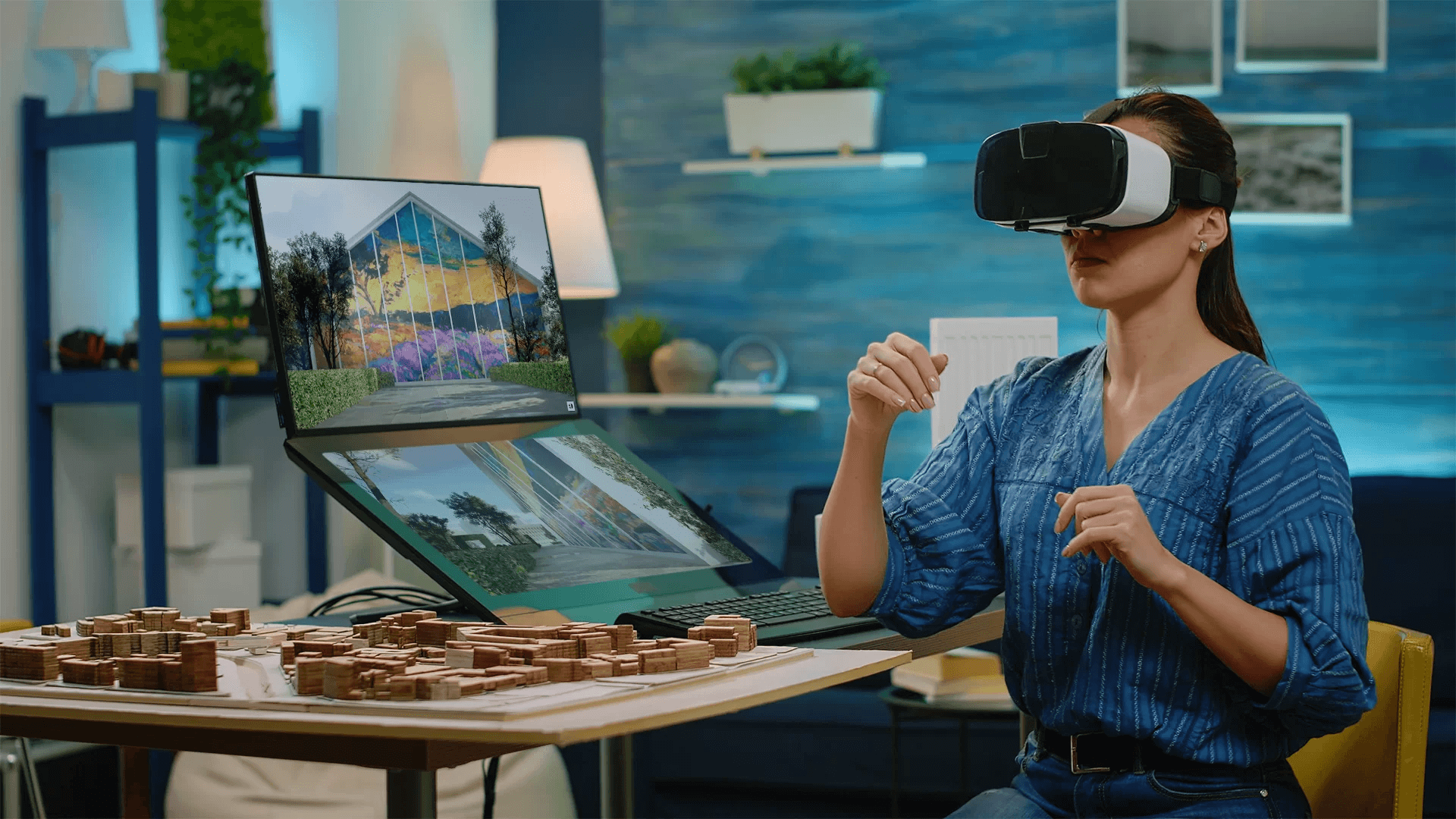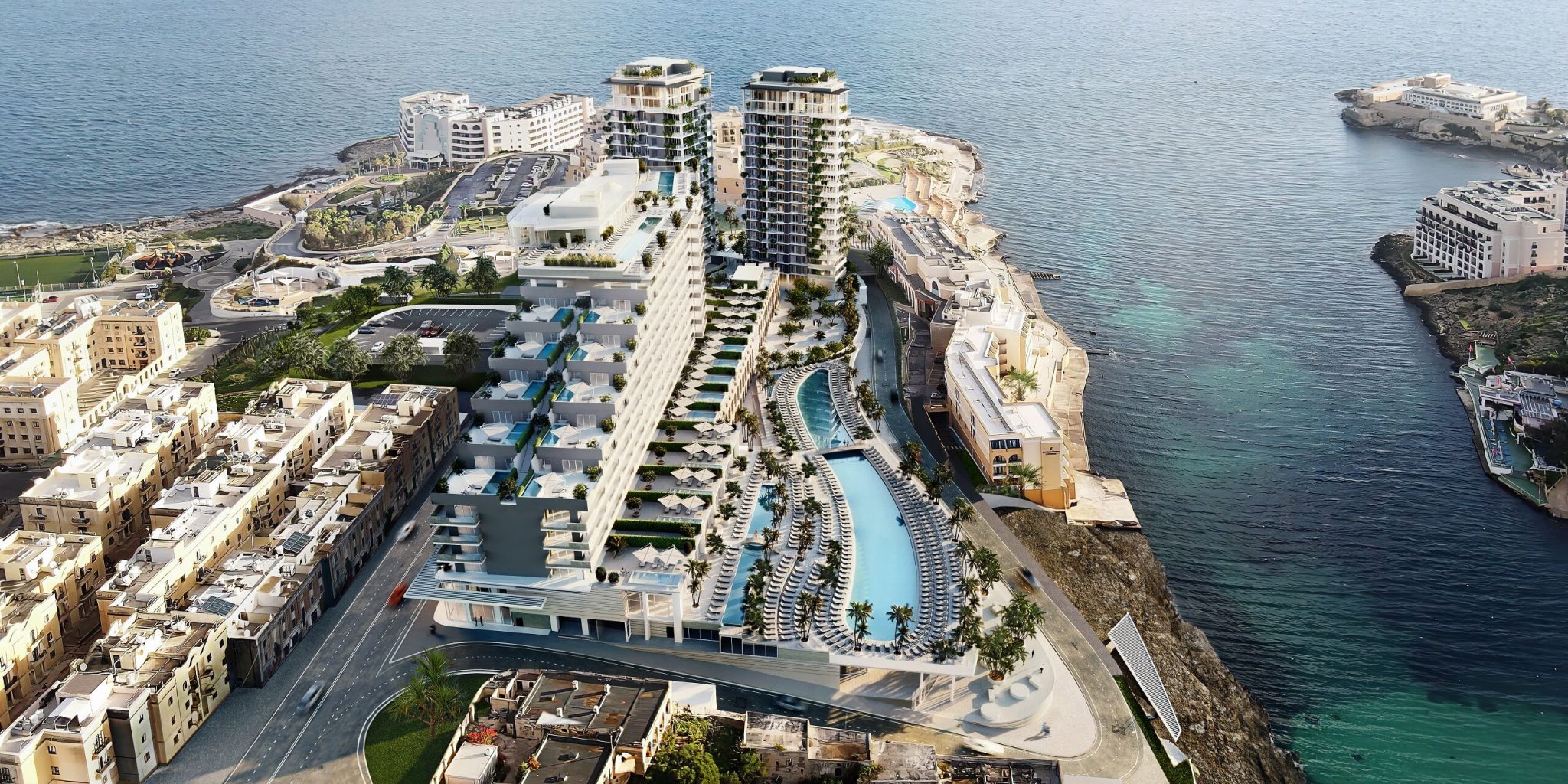High-quality visuals are vital for showcasing architectural projects. Whether it’s for a client presentation, a competition bid, or a marketing campaign, you’ll need captivating visual materials to convey your ideas. And static pictures are now not always enough to hold the audience’s attention. So, we see a rise in the popularity of different dynamic 3D visuals types that can wow even the most discerning viewers.
At our architectural rendering company, we offer various types of dynamic 3D content. Today, we’re going to talk about 7 formats that can become a game-changer for you. Let’s begin!
#1. 3D Animation
Animation is one of the most versatile and engaging types of 3D visuals. It allows architects to create a narrative around their concepts, incorporating beautiful viewpoints, transitions, effects, music, and voiceovers. This format can depict projects in different seasons or times of the day, adding depth and context to the visual experience.
Integrating 3D animation with drone footage provides a unique blend of realism and cinematic quality. However, it limits creative freedom in terms of weather and lighting conditions: they will be exactly as in the drone video. Still, it offers cost-efficiency as you don’t need to have a detailed 3D landscape built from scratch. Among other dynamic 3D visuals types, this one is particularly effective for aerial views.
#2. Virtual 3D Tour
3D virtual tours are dynamic visuals that allow users to navigate a digital environment as if they were physically present there. Such tours come in different types. With VR fusion, users can not only interactively navigate the design but also customize it. This way, VR fusion offers a more immersive and personalized experience. Virtual maps, in turn, are 3D visuals that integrate with Google Maps, allowing one to see the future project in a real-life context. Various types of 3D virtual tours are particularly useful for complex or large-scale projects, as they offer a detailed and interactive exploration.
#3. Immersive 3D Tour
Immersive tours take the virtual experience a step further by incorporating interactive elements. These tours are powered by Unreal Engine, which allows for real-time rendering of incredibly lifelike environments. Furthermore, users can actively interact with such a presentation. For example, they can change the lighting or customize the interiors.
#4. Virtual Reality

One of the most cutting-edge dynamic 3D visuals types, VR offers a fully immersive experience. It transports the viewers inside a proposed project before it’s built. By using VR headsets, users can explore every corner of a digital space, gaining a better understanding of spatial dimensions, and materials. VR is particularly effective for finalizing design details with clients, ensuring that all elements are exactly as required before construction begins. Moreover, architects can use VR to collaborate in a shared virtual space. So it’s a win-win for all the stages of a project.
#5. Augmented Reality
AR overlays digital information onto the real world. It enhances the physical environment with 3D models and data in a dynamic and engaging way. AR can be used on-site to superimpose proposed designs over existing surroundings, offering a tangible sense of scale and context. This technology helps in design presentations and increases the accuracy in the construction process.
#6. Cinemagraph
Remember moving photos in Harry Potter? Cinemagraphs are like that. These dynamic 3D visuals are pictures that include a minor repeated movement. Cinemagraphs can be used to capture the viewer’s attention in a subtle yet powerful way. In architectural visualization, cinemagraphs can highlight specific design elements or help set the atmosphere. They add life to static images and enhance the emotional impact of presentations.
#7. 360 Degree View
A dynamic 360-degree rendering allows one to rotate a realistic 3D model of a building, viewing it from all sides. Of all the types of dynamic visuals, this one is particularly useful for websites and mobile applications. 360-degree views are effective for both residential and commercial projects, offering a thorough examination from every angle.
Want to learn how much your project costs? See how we evaluate 3D rendering projects
Various dynamic 3D visuals types can help bring designs to life and impress your audience. Professional 3D rendering studios offer a range of formats that cater to different presentation needs and client interactions. Whether through the immersive depth of virtual reality or the subtle engagement of cinemagraphs, dynamic 3D visuals are invaluable tools for architects. They help them stand out and catch the eye of potential clients or contest jury members in no time.
Looking for 3D rendering services to showcase your projects in new captivating ways? Contact us today to get visuals that ensure your designs get the appreciation they deserve!

Stacey Mur
Content Writer, Copywriter
Stacey is a content writer and a CG artist. Outside of work, Stacey enjoys musicals, Star Wars, and art talk. A proud Corgi parent.



